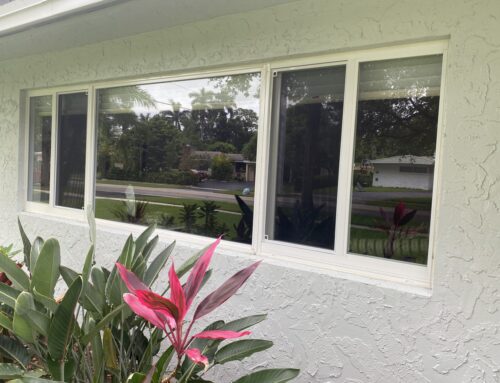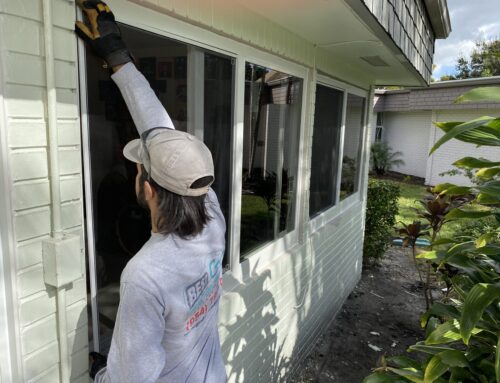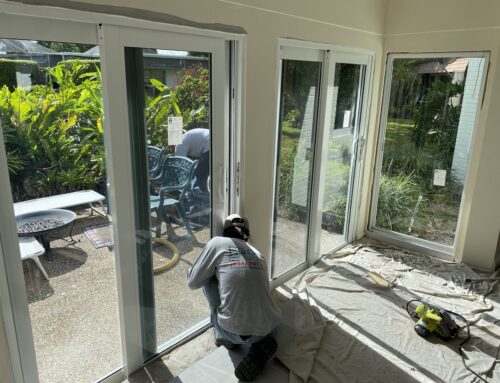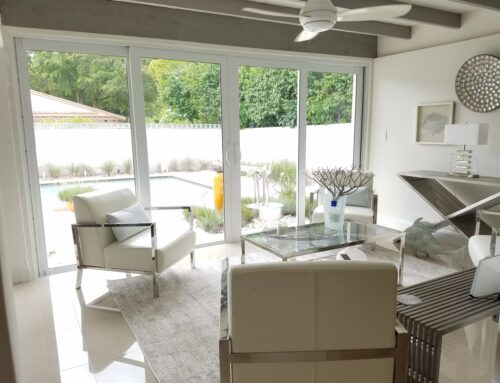In South Florida, hurricane windows are essential in protecting your home from the devastation caused by powerful storms. These specially designed windows are engineered to withstand high winds, flying debris, and even hurricane-force impacts. If you live in an area prone to hurricanes or severe weather conditions, installing hurricane windows should be your top priority. In this article, we will discuss the best practices for installing hurricane windows and provide valuable insights to help you make informed decisions.
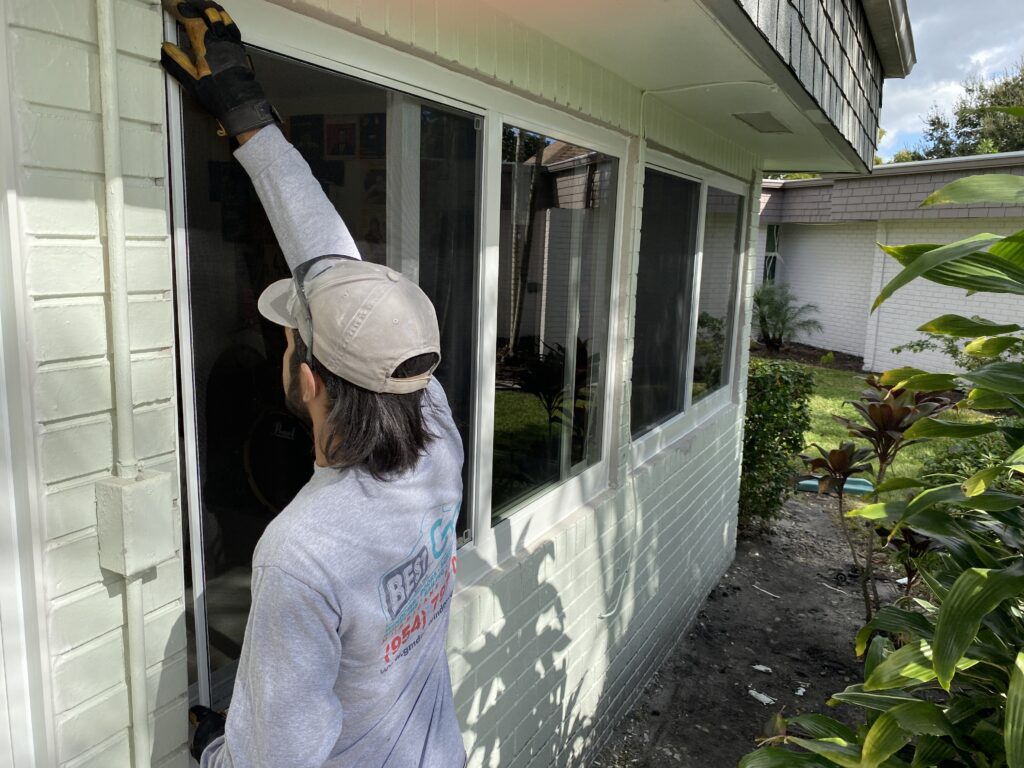
Understanding Hurricane Windows
Before diving into the intricacies of installing hurricane windows, it’s crucial to understand what they are and how they work. Hurricane windows, also known as impact-resistant windows, are designed with multiple layers of laminated glass and a reinforced frame to withstand severe weather conditions. These windows are incredibly sturdy and can withstand large impacts, preventing the penetration of debris into your home.
When a hurricane strikes, the powerful winds can send projectiles flying through the air, posing a significant threat to your home’s windows. Traditional windows are vulnerable to shattering upon impact, which can lead to extensive damage and even compromise the structural integrity of your home. However, hurricane windows are specifically engineered to withstand these forces.
What are Hurricane Windows?
Hurricane windows are made up of a combination of laminated glass and a durable frame. Unlike traditional windows, which can shatter when hit by high-speed winds or debris, hurricane windows remain intact even under extreme conditions. The laminated glass consists of two or more layers with an interlayer made of polyvinyl butyral (PVB) sandwiched between them. This interlayer provides added strength and prevents the glass from shattering upon impact.
The PVB interlayer is what sets hurricane windows apart from regular windows. When debris strikes the glass, the interlayer keeps the glass intact, even if it cracks. This prevents shards of glass from flying into your home, protecting you and your family from potential injuries. The multi-layered design of hurricane windows also provides insulation, reducing heat transfer and increasing energy efficiency.
Benefits of Installing Hurricane Windows
Installing hurricane windows offers several benefits beyond protection during severe weather events. These windows also provide enhanced security, as their impact-resistant nature deters break-ins and intrusions. The laminated glass and reinforced frame make it incredibly difficult for intruders to access your home through the windows.
Additionally, hurricane windows can reduce noise pollution, creating a more peaceful and quiet living environment. The laminated glass acts as a sound barrier, blocking out unwanted noise from traffic, construction, or noisy neighbors. This can significantly improve the quality of life in your home, allowing you to relax and enjoy a serene atmosphere.
Another advantage of hurricane windows is their ability to block harmful UV rays. The laminated glass filters out a significant portion of the sun’s ultraviolet radiation, protecting your furniture, flooring, and other belongings from fading and damage caused by prolonged sun exposure. This not only helps to preserve the aesthetic appeal of your home but also saves you money by reducing the need for frequent replacements or repairs.
Furthermore, hurricane windows improve the energy efficiency of your home. The multi-layered design, combined with the airtight seal created by the reinforced frame, helps to minimize heat transfer, keeping your home cooler in the summer and warmer in the winter. This reduces the strain on your HVAC system and can lead to significant energy savings over time.
In conclusion, hurricane windows are essential for protecting your home during severe weather events and offer a range of additional benefits. From enhanced security and noise reduction to UV protection and energy efficiency, these windows provide a comprehensive solution to improve your home’s comfort, safety, and value.
Pre-Installation Considerations
Before you begin the installation process, several factors must be considered to ensure a successful and efficient installation.
Installing hurricane windows is a significant investment that requires careful planning and consideration. By evaluating your needs and assessing your home’s structural integrity, you can make informed decisions that will maximize protection and performance.
Choosing the Right Hurricane Windows for Your Home
Selecting the appropriate hurricane windows for your home maximizes protection and performance. It’s essential to consider factors such as the level of impact resistance required by code in your area, the design of your home, and your budget.
Consulting with a professional and reputable window supplier can help you make an informed decision and select the right hurricane windows for your specific needs. They can provide valuable insights and recommendations based on their expertise and knowledge of the industry. It is even better if they have done work on other homes in the area, so they are likely familiar with potential pitfalls and challenges with your home by having worked on similar homes in the area.
Additionally, consider the aesthetic appeal of the windows. Hurricane windows come in various styles and designs, allowing you to choose options that complement your home’s architectural style and enhance its overall appearance.
Assessing Your Home’s Structural Integrity
Before installing hurricane windows, it’s essential to assess the structural integrity of your home. This step is crucial to ensure your home can withstand the additional weight and pressure from hurricane windows.
A professional inspection can identify potential issues, such as termite or water damage, and suggest necessary repairs or reinforcements. They will evaluate your walls, roof, and foundation to ensure that they are in proper condition and capable of supporting the installation of hurricane windows.
By addressing any structural concerns beforehand, you can prevent future problems and ensure the longevity of your hurricane windows.
Local Building Codes and Regulations
Check your local building codes and regulations to ensure compliance with the requirements for hurricane windows. Different regions may have specific guidelines regarding the types of materials, installation methods, and certifications necessary for hurricane window installations. And the answer is YES to the question, “Do I need a permit to install impact windows?”
Adhering to these regulations is crucial for your safety and the legality of the installation. Non-compliance can lead to potential hazards and legal complications, so it’s essential to familiarize yourself with the local requirements.
Consulting with a professional contractor who is well-versed in local building codes can help ensure that your installation meets all necessary standards and regulations.
Remember, the purpose of hurricane windows is to protect your home and loved ones during severe weather events. By taking the time to consider these pre-installation factors, you can ensure a successful installation that provides optimal safety and peace of mind.
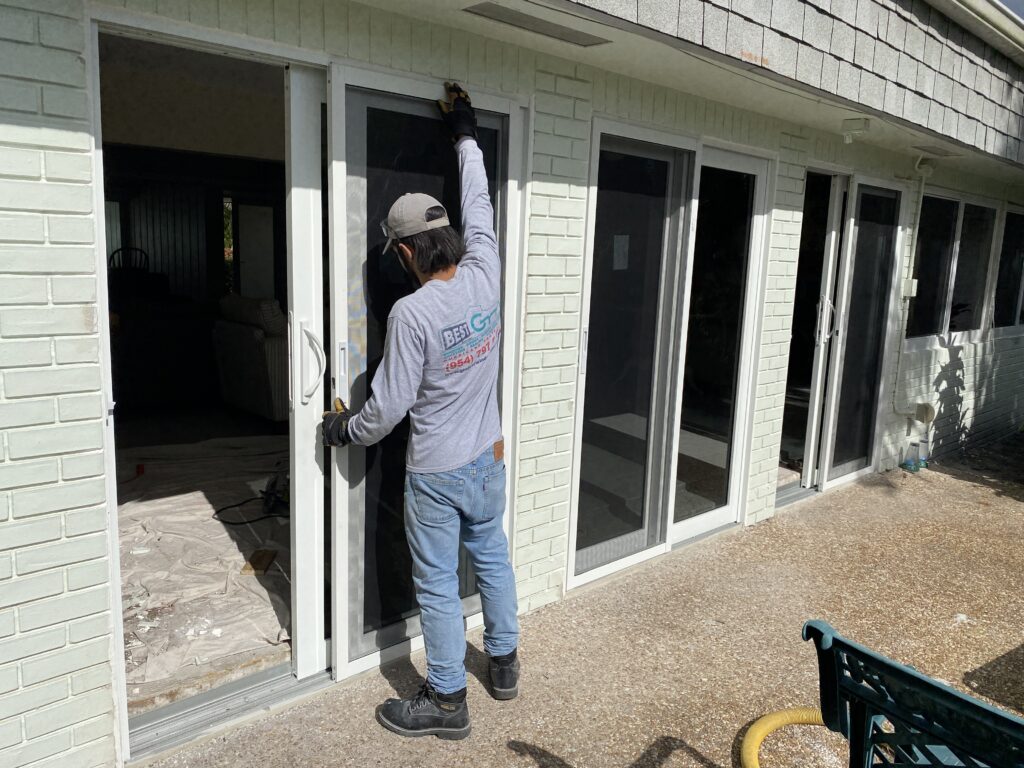
The Installation Process
The installation of hurricane windows requires precision and careful execution. Following the manufacturer’s installation instructions is crucial to ensure your windows’ optimal performance and longevity.
When it comes to installing hurricane windows, attention to detail is key. The process involves more than just replacing your existing windows with new ones. It requires a systematic approach that includes various steps to ensure a secure and proper installation.
Tools and Materials Needed
Before starting the installation, gather all the necessary tools and materials. These may include a tape measure, level, screws, caulking gun, sealant, and any additional items recommended by the window manufacturer. Having everything on hand will streamline the installation and prevent unnecessary delays.
Using a tape measure is essential to measure the dimensions of your existing window openings accurately. This step is crucial because hurricane windows must fit perfectly to protect against strong winds and flying debris. Professionals will take measurements to provide an estimate and come out and measure the openings a second time when it comes time to order your impact windows. The measurements must be accurate because the windows are manufactured specifically to fit your home. A wrong measurement can significantly delay the completion of your window replacement project.
Additionally, a level is necessary to ensure that the windows are installed straight and level. This is important for both aesthetic purposes and functionality. A properly leveled window will open and close smoothly, providing ease of use for years to come.
When it comes to screws, choosing the right type and size for your specific window frames is essential. Using the wrong screws can compromise the integrity of the installation and potentially lead to leaks or structural issues.
Step-by-Step Installation Guide
Installing hurricane windows typically involves removing the existing windows, preparing the window opening, installing the new window, and sealing it properly. The precise steps may vary depending on the type and design of the hurricane windows, so it’s essential to refer to the manufacturer’s installation guidelines for specific instructions. Following these instructions diligently will ensure a secure and proper installation.
Firstly, you need to move furniture away from each opening to allow room to work. From there, you’ll need to remove the old windows carefully. This process requires caution to avoid damaging the surrounding walls, frames, or window sills. However, don’t be surprised if some damage is done during the window removal process or damage is found from leaky windows or termites that will require repair of the stucco, framing, or window sills. The window company can do minor repairs, but extensive damage may need to be repaired by a stucco company or carpenter in the case of damaged framing. Once the old windows are removed, it’s important to thoroughly clean the window opening and remove any debris or old sealant.
Next, you’ll need to prepare the window opening for the new hurricane windows. This may involve inspecting the window sill for any signs of damage and making necessary repairs. Additionally, applying a waterproofing membrane to the window opening can help prevent water infiltration and enhance the overall performance of the windows.
Once the window opening is prepared, it’s time to install the new hurricane windows. This step requires precision and attention to detail. It’s important to follow the manufacturer’s instructions carefully, ensuring the windows are properly aligned and securely fastened.
After the windows are installed, the final step is to seal them properly. This involves using a caulking gun to apply a high-quality sealant around the edges of the windows. The sealant creates a watertight barrier, preventing water infiltration and enhancing the windows’ ability to withstand high winds.
Remember, the installation process is a critical factor in the performance and longevity of your hurricane windows. Taking the time to follow the correct installation procedures will ensure that your windows provide the maximum protection and durability they are designed for.
Post-Installation Tips
Once the hurricane windows are in place, a few post-installation steps ensure their optimal performance and longevity.
To close out your building permit, your municipality will have to do a final inspection. You should leave the window stickers on the windows for the inspectors to verify the proper product has been installed and meets local building codes.
Checking for Proper Installation and Sealing
The inspector will look to see that the correct fasteners have been utilized following the manufacturer’s instructions. They will Inspect the installed windows for any gaps or spaces that may compromise their effectiveness. Proper sealing is essential to prevent air and water infiltration. Use a high-quality sealant recommended by the manufacturer to seal any areas that require attention. Regularly check the seals for any signs of wear and tear and address them promptly to maintain the windows’ integrity.
Once the windows pass inspection, you should move quickly to remove the window stickers before they get baked on by the sun. You should soak the window stickers with warm water and a detergent for ten minutes, then remove the stickers with a utility knife.
Maintenance and Care for Hurricane Windows
Maintaining hurricane windows is relatively straightforward. Clean the glass regularly using a non-abrasive cleaner and a soft cloth. Avoid using harsh chemicals or abrasive materials that can damage the glass or the window frame. Additionally, lubricate the window tracks and hinges periodically for smooth functionality. These simple maintenance practices will ensure your hurricane windows’ longevity and proper functioning.
Hiring Professionals vs. DIY Installation
Deciding whether to hire professionals or undertake a DIY installation of hurricane windows depends on various factors, such as your level of expertise and resources.
When to Consider Professional Installation
If you have limited experience with window installations or lack access to the necessary tools and equipment, hiring professionals for the installation is highly advisable. Impact windows, by nature, are heavy, large, and unwieldy. Depending on the number of openings, it takes an experienced crew one or two days to complete an installation. They have the expertise, knowledge, and tools to ensure a seamless and secure installation, saving you time and ensuring peace of mind. You should also look for a window company with its own in-house installation team. If the installation work is contracted out, there is a significant risk of not getting an expert window installer to do the work.
Tips for DIY Installation
If you are confident in your abilities and have the necessary tools and resources, DIY installation can be cost-effective. However, it’s essential to follow the manufacturer’s instructions diligently and always prioritize safety. Take your time, seek assistance if needed, and don’t hesitate to consult professionals if you encounter any difficulties.
In conclusion, installing hurricane windows is crucial in safeguarding your home and loved ones during severe weather events. By understanding the benefits of hurricane windows, considering important pre-installation factors, following the correct installation process, and taking proper post-installation care, you can ensure the optimal performance and longevity of these impact-resistant windows. Whether you choose professional installation or tackle the project yourself, the peace of mind and protection provided by hurricane windows make it a worthwhile investment.
GM Door, Window & Screen is a family-owned and operated business. GM has been servicing South Florida since 1968. Call us for a free estimate at (954) 797-0797.

